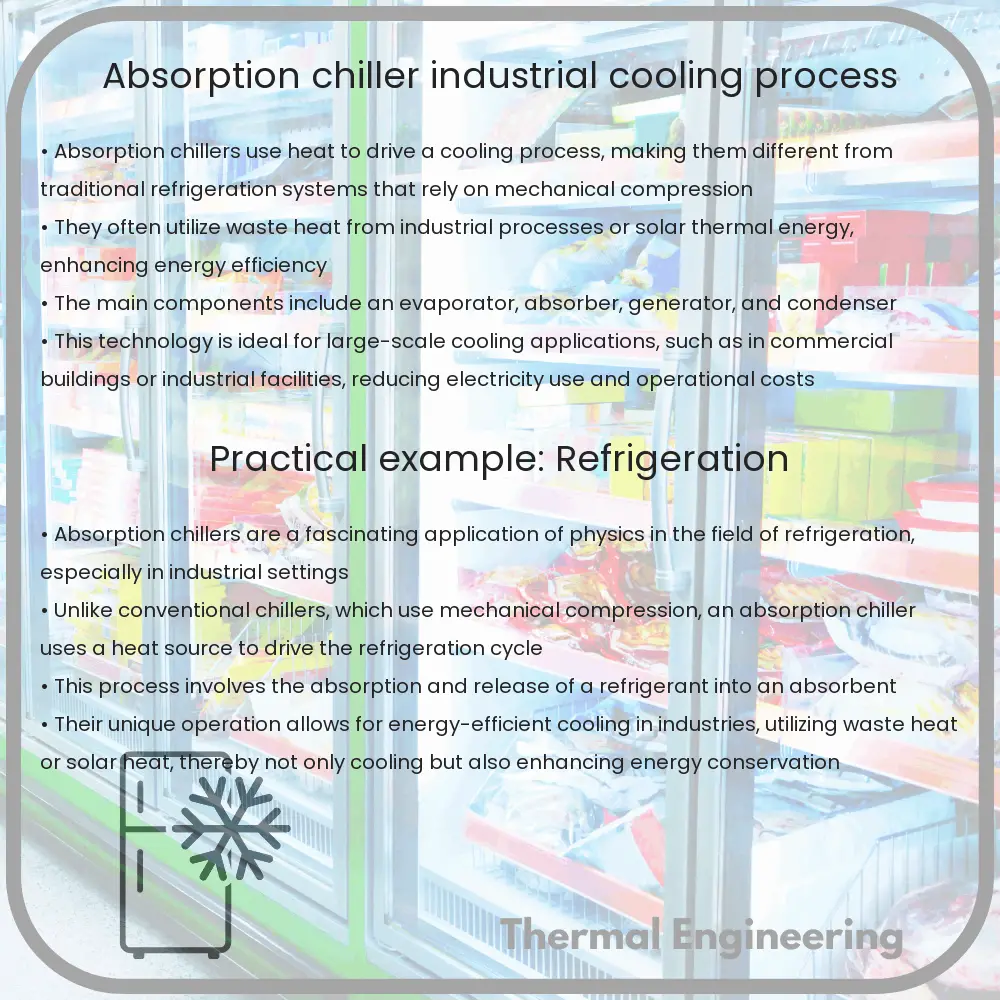Learn about absorption chillers, eco-friendly industrial cooling systems utilizing waste heat for energy efficiency.

Understanding Absorption Chillers: The Basics of Industrial Cooling
Absorption chillers are a type of refrigeration system that uses a heat source to provide the energy needed to drive the cooling process. This system is distinct from more conventional refrigeration systems, which typically use mechanical compression. Absorption chillers are commonly used in industrial settings as well as in large commercial buildings, such as hotels and hospitals, where waste heat from processes or solar heat is readily available.
How Absorption Chillers Work
The basic operation of an absorption chiller involves three primary components: the evaporator, the absorber, and the generator. Here’s how these parts work together in a cycle:
- Evaporator: In the evaporator, a refrigerant (often water) absorbs heat from the surroundings, causing it to evaporate. This phase change pulls heat from the environment, thus creating a cooling effect.
- Absorber: The vaporized refrigerant is then absorbed by a hygroscopic fluid, typically lithium bromide solution, which is drawn into the absorber. This process of absorption generates heat, which is then removed by a cooling tower.
- Generator: To regenerate the refrigerant and continue the cycle, the solution containing the absorbed refrigerant is heated in the generator. This heating process causes the refrigerant to vaporize out of the absorbent solution. The refrigerant vapor then cycles back to the evaporator, and the absorbent solution returns to the absorber to repeat the process.
The heat required for the generator can come from various sources, including solar energy, geothermal energy, or waste heat from industrial processes. Because of its ability to utilize waste heat, the absorption chiller is particularly esteemed for its energy efficiency and its contribution to reducing environmental impact.
The Role of Absorption Chillers in Industrial Cooling
Absorption chillers are integral in industries where there is an ample amount of waste heat. Instead of disposing of this heat into the environment, it is repurposed into a productive tool for cooling. Here are some of the advantages of using absorption chillers in an industrial context:
- Energy Efficiency: By using waste heat as the primary energy source for cooling, these chillers significantly reduce the amount of primary energy required, leading to energy conservation and cost savings.
- Environmental Impact: Utilizing absorption chillers helps decrease overall greenhouse gas emissions, as they largely rely on heat sources that might otherwise contribute to environmental heating.
- Cost-Effectiveness: Reducing the electricity consumption for cooling not only saves costs but also reduces dependency on electrical infrastructure, which can be particularly advantageous in areas with limited energy resources.
Conclusion
Absorption chillers represent a compelling solution in the panorama of industrial cooling systems, especially in scenarios where harnessing waste heat is feasible. By transforming waste into a resource, these systems do not just contribute to more sustainable business operations but also align with global energy efficiency and environmental protection goals. As technology advances, the scope for absorption chillers’ efficiency and applications is expected to widen, further enhancing their role in sustainable industrial practices.
Whether you are a student, an engineer, or simply someone interested in efficient cooling systems, absorption chillers offer a fascinating glimpse into the practical application of thermodynamic principles.